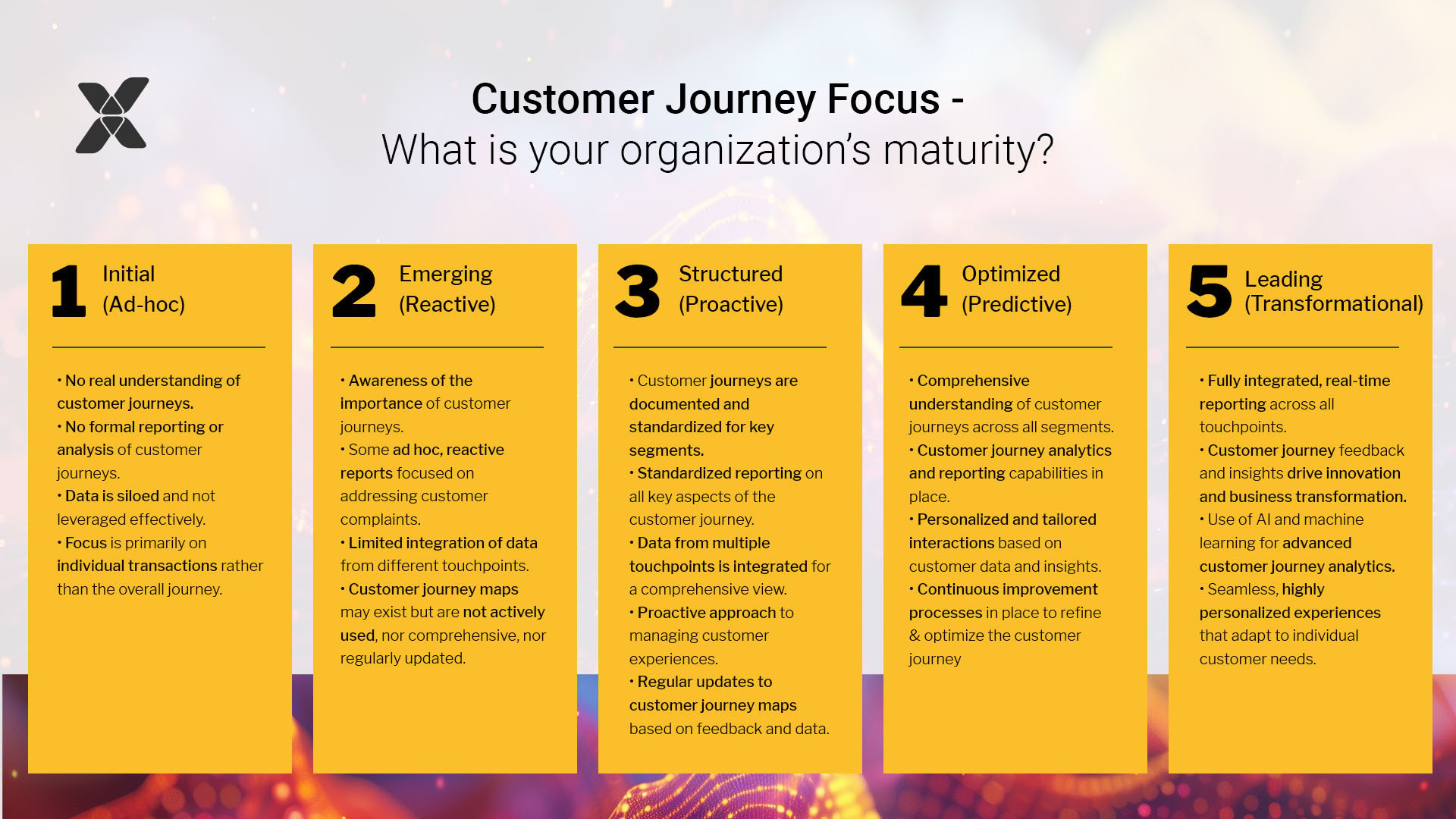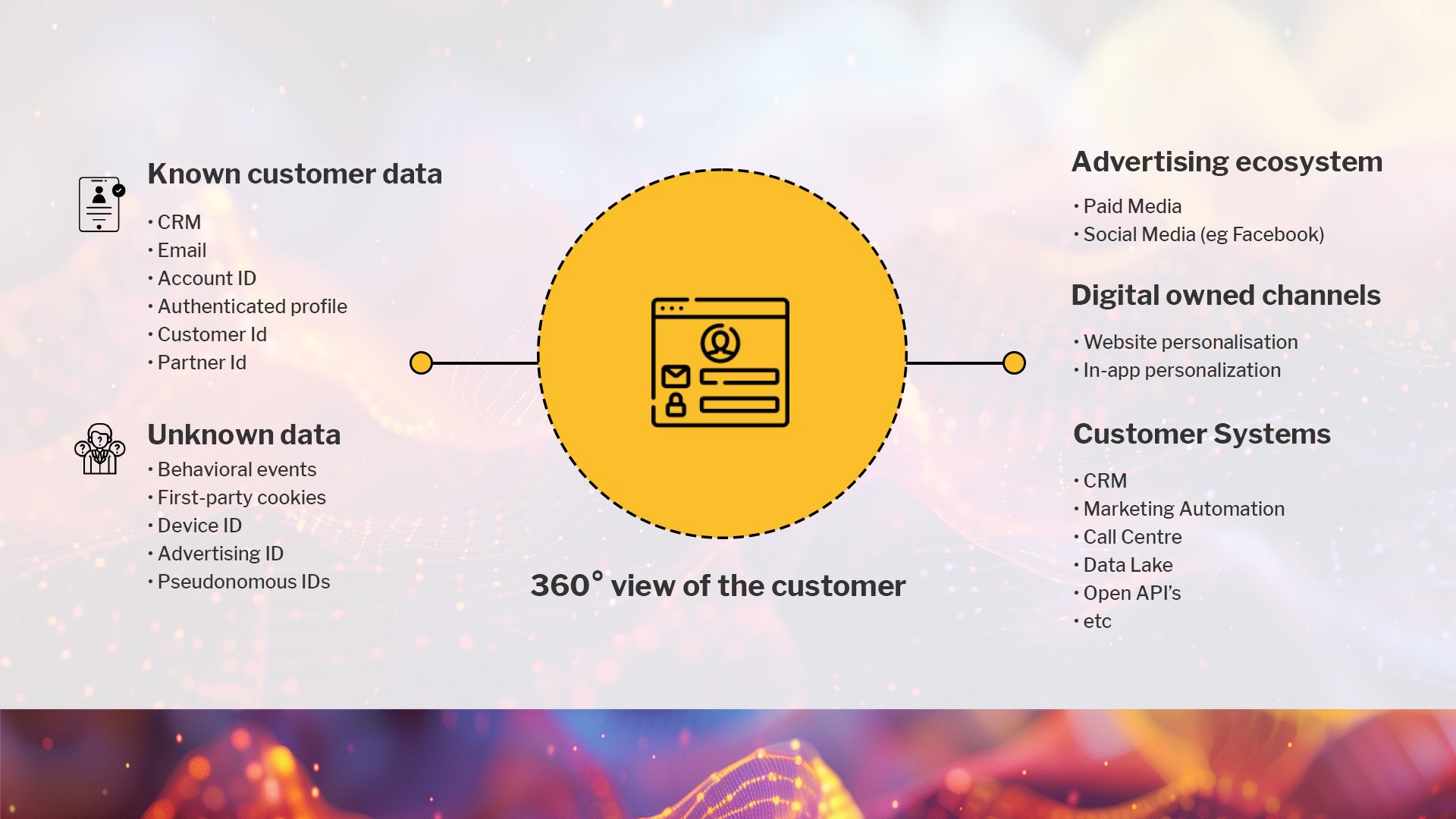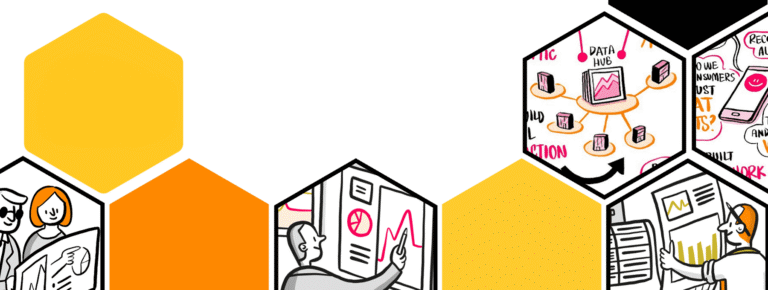Customers are essential to every business, and research shows that when you optimize and personalize the user experience to customers’ needs, customers interact more with your brand and are much more likely to purchase from your brand. And if you consistently improve that experience, customers will return and are much more likely to become loyal customers. So why are many companies still operating too product-centric?
Adopting a customer-centric approach is crucial as it enables businesses to understand and address their customers’ specific needs, perceptions, and expectations, fostering satisfaction, loyalty, and advocacy. Customer journeys play a pivotal role in this approach by offering a comprehensive view of all customer interactions with a brand, allowing companies to identify and resolve pain points, optimize touchpoints, and create seamless, personalized experiences.
This blog post explores the importance of a customer-centric approach, the challenges faced, and the solutions available to derive real business value from customer data.
- Why work customer-centric instead of product-centric?
- Challenges and solutions in customer journey analytics
- Leveraging AI for enhanced customer journey analytics
- Key takeaways
Watch our webinar
Why work customer-centric instead of product-centric?
Many leading brands proof that focusing on customer needs is a key recipe for success, like the following examples:
- Amazon: Known for its relentless focus on customer satisfaction
- Apple: Renowned for its seamless and intuitive user experience
- Starbucks: Famous for its personalized approach based on customer feedback
- Adobe: Transitioned to a fully digital business, focusing on customer needs through its Creative and Experience Clouds
These companies exemplify how a strong focus on customer needs can lead to significant business success. In fact, they are customer-centric organizations. Or as Gartner defines it:
“Customer centricity is the ability of people in an organization to understand customers’ situations, perceptions and expectations whereby the customer is at the center of decisions related to delivering products, services, and experiences to create customer satisfaction, loyalty and advocacy.”
Challenges and solutions in customer journey analytics
The journey to understanding and optimizing customer interactions is filled with challenges, but the right strategies can turn these into opportunities.
- Getting started with customer journey mapping
- Solution: Begin by mapping out the customer journey. This helps align KPIs, identify customer needs, and recognize pain points across different phases of the journey.
- Understanding customer journeys across touchpoints
- Solution: Collect data from various touchpoints to comprehensively view customer interactions. This involves moving towards a first-party data strategy due to the decline of third-party cookies.
- Customer data scattered across platforms
- Solution: Develop a single view of the customer by consolidating data from multiple sources and using advanced analytics capabilities. This requires integrating data from various platforms and identifiers to create a unified customer profile.
- Overcoming organizational silos
- Solution: Establish a common vision and roadmap that crosses departmental boundaries, ensuring that all teams work towards unified goals with aligned metrics and terminology.
Getting started with customer journey mapping
To begin mapping out the customer journey, define the key phases and main customer activities per phase. This helps to align on KPIs, clarify customer needs, and recognize pain points across different journey stages. You can map the overall journey with key phases in the Customer Lifecycle (CLC) or focus on a more specific journey.
This approach is a powerful tool to align discussions around the customer and collaborate to identify key areas to focus on at any given moment. As journey maps are working documents, you will find that the more you understand the customer in its journey, and the more involved teams become, the richer and more informative these maps will be.
Before diving into the main challenges and solutions to gain a clear view of the customer journey, let’s examine the different maturity levels. We use a five-level maturity model to help our customers assess their current position and define improvement strategies. There are no right or wrong answers, but it’s crucial to know what to focus on when mapping your customer journey within your organization.
Starting from an initial state with no defined customer journeys and data silos, companies can progress to a structured, proactive level where journeys are documented and standardized. As companies mature, they fully integrate data, provide real-time insights for all touchpoints, and are capable of advanced analysis to create personalized experiences across all interactions.

Understanding customer journeys across touchpoints
Collecting data from various touchpoints is essential to gain a comprehensive view of customer interactions. This involves moving towards a first-party data strategy due to the decline of third-party cookies. In today’s digital era, customers interact with brands through numerous online and offline touchpoints, leaving traces of data relevant to their journey. Customers control when, where, and how they engage with a brand, making the customer journey nonlinear and complex. Brands must keep track of these interactions to understand customer behavior and intentions.
For example, a car seller managing touchpoints such as web, app, car dealers, and call centers will encounter numerous scenarios. Defining key strategic journeys helps focus on what is important for the business. When collecting data through these journeys, ensure that each team optimizes experiences based on accessible data.
The critical challenge is linking all this data together, which starts with a first-party data strategy. As third-party data becomes obsolete, brands need to manage first-party data more intelligently to follow the customer across their journey and connect all interactions to a single customer profile.
However, customers will not provide information for free; they need motivation. Encourage them to authenticate by highlighting the benefits, whether through rewards or enhanced experiences. Ensure that all signals are captured to reconcile data later, and clearly explain the importance of consent for the customers’ benefit.
Customer data scattered across platforms
Developing a single view of the customer involves consolidating data from multiple sources and using advanced analytics capabilities. The average consumer has eight connected devices, leaving data traces with each interaction. Companies leverage an average of 16 data sources for customer information, increasing to 25 when aiming to act on this data.
Identity management is crucial to understanding, analyzing, and activating customer data. Due to inadequate data models, traditional analytics solutions struggle to transform visitors into customers. Solutions include working with IT teams to synchronize IDs from various data sources or leveraging Customer Data Platforms (CDPs) to create a 360-degree customer profile. However, not all CDPs offer advanced analytics capabilities. Effective identity resolution involves multiple teams within the organization to make informed decisions.

Overcoming organizational silos
Establishing a common vision and roadmap that crosses departmental boundaries ensures all teams work towards unified goals with aligned metrics and terminology. Managing great customer experiences is challenging due to the involvement of various teams that need to be aligned.
This can be compared to Formula 1, where engineering, car design, mechanics, data, and race strategy must come together to win. Data-driven high performers and major players have a clear vision that crosses traditional silos, both in understanding their customers and building their business on high-quality data accessible throughout the organization.
Without a shared vision and objectives, efforts can become inefficient and less effective. Customer journey analytics bridges the gap between digital analytics and business intelligence (BI), reconciling online and offline data sources using advanced analytics capabilities. This allows all company users to follow customer activity using the same solution.
Customer journey analytics solutions offer the following capabilities:
- Combine different data sources and reconcile them into a unique data schema.
- Data democratization to ensure common KPIs, dimensions, and segmentation across departments
- Data customization to create specific views and adjust metrics according to needs
- Real-time data processing and reporting to provide insights quickly
- Integration with the rest of the enterprise architecture, starting with the data warehouse for exporting data and segmentation
Building a comprehensive view of the customer journey helps understand when and how potential leads or revenue are lost in different phases, reducing bottlenecks and providing actionable insights for various departments. This approach combines different data sources to maintain the entire customer journey view, enhancing the overall customer experience.
Want to learn more? Watch the recording from our webinar »
Leveraging AI for enhanced customer journey analytics
Artificial intelligence (AI) can significantly boost the capabilities of customer journey analytics:
- Detect changes and anomalies: AI can identify deviations from normal data trends, alerting businesses to potential issues or changes in customer behavior.
- Boost predictive analytics: Advanced predictive analytics powered by AI can help identify key converting segments and anticipate customer needs.
- Facilitating data democratization: AI-driven tools can make data insights more accessible across the organization, enabling non-technical users to derive value from data without the need for specialized expertise.
Key takeaways
- Adopt a customer-centric approach: Focusing on customer needs, perceptions, and expectations is crucial for fostering satisfaction, loyalty, and advocacy. Understanding and optimizing customer journeys play a pivotal role in this approach.
- Map customer journeys: Begin by mapping out the customer journey to align KPIs, identify needs, and recognize pain points. This helps in centralizing discussions around the customer and facilitates collaboration across departments.
- Shift to first-party data strategy: With the decline of third-party cookies, focusing on first-party data is essential. Encourage customers to provide information by offering benefits and ensure compliance with privacy regulations.
- Develop a single customer view: Integrate data from multiple sources to create a unified customer profile. This holistic view is vital for effective personalization, marketing automation, and efficient advertising campaigns.
- Break down organizational silos: Establish a common vision and roadmap that crosses departmental boundaries. This ensures all teams work towards unified goals with aligned metrics and terminology, fostering a collaborative, data-driven culture.
- Leverage advanced analytics capabilities: Utilize advanced analytics to combine different data sources, ensure real-time data processing, and provide actionable insights quickly. This enhances the overall customer experience.
- Utilize AI to enhance journey analytics: AI can detect changes and anomalies, boost predictive analytics, and democratize data insights across the organization, making data-driven decisions more accessible.
How Vaimo can help
A customer-centric approach supported by comprehensive journey analytics is essential for modern businesses aiming to thrive in a competitive market. By understanding and optimizing customer interactions across all touchpoints, companies can ensure they meet their customers’ needs and expectations, driving satisfaction, loyalty, and advocacy.
But how do you know where you stand with your customer data?
We’re here to help. Our customer data assessment is a free tool created to help you to get an idea where you stand with customer data. Here’s an overview of what the assessment involves and its benefits:
- Customized evaluation: Respond to a set of specific questions aimed at evaluating your ecommerce infrastructure, data management practices, and overall business objectives.
- Tailored insights: Gain personalized insights and recommendations based on your answers, helping you understand if adopting a CDP (customer data platform) aligns with your business goals and needs.
- Professional guidance: Receive expert advice and recommendations from our team of seasoned professionals, offering further assistance and support in implementing a CDP solution tailored to your requirements.







